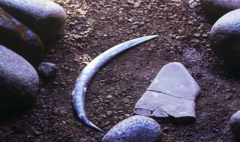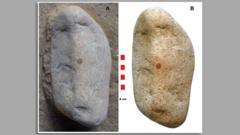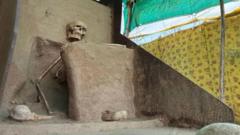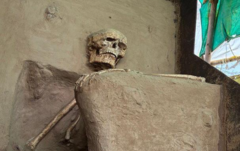Rakhaldas Banerjee, while overshadowed by history, played a crucial role in uncovering the remnants of an ancient civilization, revealing the Indus Valley's profound historical significance.
The Legacy of Rakhaldas Banerjee: Unveiling an Ancient Civilization

The Legacy of Rakhaldas Banerjee: Unveiling an Ancient Civilization
An examination of the life and work of the Indian archaeologist who rediscovered Mohenjo-daro.
Rakhaldas Banerjee, an Indian archaeologist whose groundbreaking work in the early 20th century has faded into obscurity, pioneered the discovery of Mohenjo-daro, an ancient city of the Indus Valley Civilization located in present-day Pakistan. Banerjee's unyielding passion for archaeology and exploration led him to uncover one of the most pivotal and enigmatic civilizations in history, yet his controversial career has largely dictated his absence from mainstream historical narratives.
During his tenure with the Archaeological Survey of India (ASI) under British colonial rule, Banerjee's bold explorations were met with both acclaim and criticism. His independent nature often contended with the expectations and protocols of colonial authorities, resulting in disputes that have led to his near-erasure from the history of his greatest discovery. Despite the groundbreaking findings at Mohenjo-daro, Banerjee's reports went unpublished, and he was eclipsed by his superior, John Marshall, who took credit for the discovery.
Prof. PK Mishra and noted historian Nayanjot Lahiri have highlighted how Banerjee’s lack of diplomacy and high-handedness created friction with colleagues. His well-documented disagreements, including unauthorized attempts to procure artifacts and unexplained expenditures, marred his legacy and depicted him as an unsettled figure within the ASI. Yet, his contributions remain significant among historians, particularly in Bengal.
Born in 1885 in a privileged family, Banerjee developed a keen interest in history early on, propelled by the relics found in his hometown of Baharampur. His academic journey began with the ASI as an excavation assistant in 1910, advancing to a superintending archaeologist by 1917. Banerjee was drawn to the site of Mohenjo-daro in 1919, where his excavations revealed numerous important artifacts, including ancient seals that showcased a connection to Harappa.
Though his exploration between 1922 and 1923 documented numerous ruins and artifacts, by 1924, Banerjee faced financial constraints that led to his reassignment away from the site. Reports suggested that he had improperly used excavation funds on personal expenses, leading to disciplinary actions and ultimately a transfer.
Further complicating his career, Banerjee’s involvement in a theft case concerning a sacred idol cast a shadow over his reputation. Following a contentious investigation where Banerjee was implicated but later exonerated, he resigned from the ASI under pressure. His post-ASI life as a professor at Banaras Hindu University was filled with personal struggles, and he died prematurely at the age of 45 in 1930.
Despite his turbulent legacy and the controversies surrounding his career, Rakhaldas Banerjee's findings at Mohenjo-daro remain a cornerstone in the study of the Indus Valley Civilization, emphasizing the importance of recognizing the contributions of often-overlooked historical figures.




















